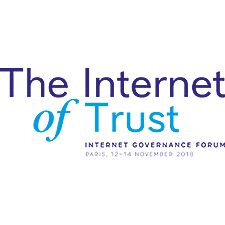Internet mega-trends’ impact on the internet’s architecture
12 Nov 2018 11:45h - 13:15h
Event report
[Read more session reports and live updates from the 13th Internet Governance Forum]
This session provided an overview of the service-driven trends that generate the Internet usage, and their implications for the Internet’s architecture. Speakers’ interventions honed in on the evolution of the Internet standards, applications, and services.
Mr Wout de Natris, De Natris Consultant, moderated the session and provided remarks on the expected interactions and outcomes to follow the speakers’ interventions.
Mr Jari Arkko, General Area, Internet Engineering Task Force (IETF), initiated the discussions on theshift from device-centric to service-centric networking and emphasised the prevalence of consolidation across platforms. Arkko addressed changes to, inter alia, encryption and email services. He noted that the Internet growth, and in particular markets, economics, competition, policy. and technology, was the driver behind the said shifts. Beyond economics, Arkko touched on the factors such as network effects, fundamentals, permissionless innovation, and technology, which stimulated performance-centric improvements. He attested, however, that more was probably needed to understand trends, research. and consequences such as the asymmetric balance of power that arises with technological development.
Ms Alissa Cooper, IETF Chair, mentioned that at the IETF the focus on developing protocols in a safer environment started in the late 1990s and early 2000s, and the present push for encryption and security developments come in the aftermath of the 2013 Snowden revelations. Cooper gave the examples of HTTP/1, HTTP/2, and HTTP/3, where questions concerning, inter alia, mandated encryption and TLS use were debated at the development phases of these standards. She explained auxiliary developments such as ‘perfect forward secrecy’ that provided part of the solution to encryption and security concerns. Cooper spoke in detail about QUIC, which provided a key advantage in encrypting headers, with TLS and HTTP rolled in as well. Although QUIC is yet to be published, 30% of Google’s traffic is already encrypted with it. Cooper closed her initial comments with a quick reference to other engineering challenges to be studied.
Ms Maria Ines Robles, Co-Chair of IETF ROLL working group, framed the technological shift as a growing need for users to access content and devices irrespective of where they are located. Robles briefly discussed the Internet of Things (IoT) and device-to-device communication contexts, and how services drove the Internet usage. She gave examples of eCommerce services like ticket ordering, and Web of Things (WoT) thing description, the latter being a description of the metadata and interfaces of things (physical or virtual entities). Robles further explained that the architecture to support WoT Thing Description is focused on services and their functionality, and that thing descriptions were a set of property actions and events that a user can manipulate with operations. Robles also addressed resource management, where a resource is an atomic piece of information that could be manipulated via the Internet such as a temperature value, service or operation. Robles stated that with the new paradigm of service distribution, assuring security and privacy components was inevitable.
In the question and answer segment, participants and speakers addressed service-oriented networking, fixing or improving the security of IoT using service-based approaches and the pace of technological developments. Speakers concurred that given the complexity of the discussed developments it would be difficult to use generalised approaches to resolve specific security questions, but work on these questions was ongoing all the same.
By Kevon Swift
Related topics
Related event

